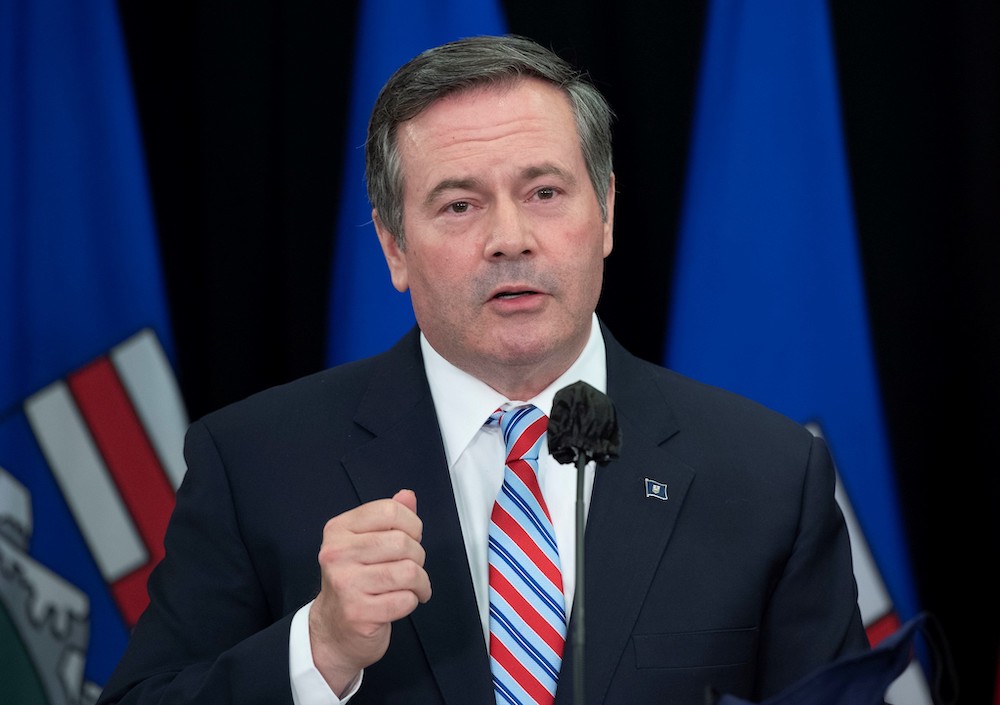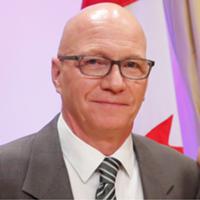anti-Black racism & ‘culture of fear’
LONG READ
In 2019, an audit showed that while nearly 75 percent of the city’s population was racialized, that only translated into 37 percent of Brampton’s municipal staff. In the City’s corporate leadership team, that dropped even lower to 15 percent.
On September 22, 2020, Williams HR Consulting Inc. was hired by the City of Brampton to conduct an independent review into the experiences of Black employees at the City, including an assessment of processes, policies and procedures, to determine the existence and/or scope of discriminatory experiences or practices.
The review included employee experiences and observations related to anti-Black racism in the workplace using interviews with a selected sample of City employees to hear their experiences and observations of the treatment of Black employees within the workplace. It also involved considering their impressions, perspectives and opinions as a critical source of information to inform the review’s findings.
Additionally, it involved assessing the City’s policies, procedures and practices against a proprietary “Gold Standard” of requirements and best practices for investigating and addressing complaints and incidents of discrimination, and related processes, in light of the applicable legal requirements the municipal corporation is obligated to meet.
The City did not fare well.
Submitted to then-Chief Administrative Officer David Barrick on December 17, 2021, the executive summary would eventually make its way onto a public council agenda in late April with few details, garnering no discussion, and then land quietly on the City’s website under its Equity Office’s documents.
The review found that many Black participants who spoke with the external firm did not feel the City has fostered a workplace environment and culture supportive of Black staff.
Perceptions of Black employees markedly differ from those of senior members in leadership and management regarding the supportiveness of the workplace environment.
Black and racialized participants noted recent improvements in their workplace culture and environment, though a “culture of fear” remained, with white employees being reluctant to engage in dialogue or action about issues of equity, diversity and inclusion (EDI).
The full review by Williams HR Consulting has not been made publicly available by the City at this time. It’s unclear why it was only placed onto an obscure page of the City website now, after being submitted to the CAO’s office almost five months ago.
Councillor Gurpreet Dhillon said he was not told about the anti-Black racism review when it was submitted to the CAO and only found out about it five months later, in what he referred to as “part of a continued lack of transparency from the administration.”
“We recently saw three senior Sikh and one senior Black staff let go, while an influx of hirings from Niagara occurred immediately after who did not reflect Brampton’s diversity,” Dhillon said.
“It appears that diversity is being politicized. Black residents and others from communities that continue to be taken for granted are becoming more and more frustrated. I am hopeful we can see real action where women, LGBTQ+ individuals, visible minorities, especially Black residents, are in the top jobs across the city.”
Councillor Martin Medeiros said he became aware of the review when it was raised in council a couple weeks before Barrick was let go on February 11 (following his brief, controversial tenure as CAO) and only because Councillor Charmaine Williams asked about it in chambers.
“We often don’t get involved in administration as per the Municipal Act, but with that said, collectively it’s a wakeup call for everybody at the City of Brampton, including myself,” Medeiros said.
“The easy thing for me to say, and some of my colleagues would say, is that we can’t get involved in HR matters, we can’t get involved in that stuff—and certainly we can’t. What we can do is ensure the people who make up the leadership of the organization are properly vetoed and vetted, are properly hired so that we have the best people to address these issues and build a culture not of fear, but of inclusion. A culture where people feel courageous coming forward and there’s proper processes and people believe in the processes at the City of Brampton.”
Employee hiring practices were also noted in the executive summary of the review to have anti-Black discriminatory aspects.
The practices were found to be inconsistent among departments with respect to their consideration of EDI. Nepotism is viewed as a significant issue in hiring practices across multiple departments, and hiring efforts targeted at racialized and Black staff were not perceived to be genuine. They did not lead to more diverse hires.
Diversity throughout the City’s departments and divisions was noted to be widely varied, with Black and racialized employees concentrated at lower levels of the organizational hierarchy.
Within certain departments, Black and racialized employees are most often employed in precarious employment roles.
In other words, Black employees are excluded from positions with higher authority and pay, while they do not have the same job security.
Within the review, Black participants were wary of diversification efforts, which they perceived to be flawed, disingenuous, and ultimately ineffective at yielding more Black hires. In addition, the review found concerns about hiring did “not appear to be held by senior leaders in certain departments,” who remain unaware or unconcerned about the ongoing problems.
The City’s Black employees were found to be particularly disadvantaged in career advancement, which was attributed to the lack of continuous learning and mentorship opportunities accessible to them.
The review noted internal development and education programs have not been sufficiently socialized to Black employees, and they have struggled to leverage their experience and credentials for the benefit of their careers.
These findings reinforce what others have said in the past. In 2021 equity advocate David Bosveld raised the issue of discriminatory hiring practices at City Hall, and Councillor Charmaine Williams shared correspondences from residents who described the discrimination they faced when applying for City Hall jobs.
“They’re constantly trying, or claiming to try to do this research, when we all sort of indicated underlying the hiring practices and the make up of staff is the problem of nepotism and anti-Blackness,” Bosveld said in an interview with The Pointer Wednesday.
“It’s been unpleasant. As I’ve been engaged with trying to move the ball forward with other community members, it’s been a tough process. It’s hard to have confidence in the current leadership.”
Bosveld has also been involved in efforts to confront systemic discrimination in the Peel District School Board and Peel’s police system, which dovetailed into the advocacy around anti-Black racism at City Hall.
He said immediate action is needed at City Hall including specific targeted hiring and more accountability.
He would also like to see a full census of City Hall staff as it is comprised today as well as an application process that allows candidates to self-identify.
“As of today we’re still sitting here, where folks can escape accountability by saying, ‘We don’t have this data’.”
Much of what Bosveld and other racialized community members pushing for change have requested can be found in Williams HR Consulting’s recommendations, although the City hasn’t made any strategy public regarding how it plans to implement the changes—if they will attempt at all.
Sitting on the report for five months, until stakeholders started asking about the review paid for by local taxpayers, does not inspire confidence.
“It requires commitment and understanding and training, an entire philosophical change in how the City does business,” Bosveld said. “We’re going to have an election in October, we’ve got a mayor who's absent from council because he’s campaigning for Conservative leadership— when do we see any results even from the recommendations? I’m not sure.”
In December 2020, as frustration around the lack of opportunity for visible minorities in Brampton, who make up close to 80 percent of the city, council directed staff to create an Equity Office, which was established in September, 2021. Its vision was to create an environment of equity, inclusion, diversity and anti-racism within the corporation of the City of Brampton and in the community, hold respectful dialogue around bias, racism and the removal of discriminatory barriers, while ensuring compliance with human rights legislation, employment standards, equity principles, other related legislation and best practices.
The office became host to the Black African and Caribbean Social, Cultural, and Economic Empowerment and Anti-Black Racism Unit, also known as the “Unit,” which was founded earlier in June of 2020.
The Williams HR Consulting review was critical of what could be described as performative initiatives, noting these EDI undertakings are not effectively communicated within the City. There was also a lack of understanding of the purpose, intentions, objectives, integration or interrelation among the various EDI initiatives, and a perception that they are ad hoc, disconnected from any larger, effective strategy.
The EDI training is not mandatory, and there are currently no accountability or follow-up mechanisms in place to ensure that trainees and learners carry out relevant actions to develop and apply what they learned.
The review noted that onboarding processes do not appear to involve a strong EDI component, are inconsistently provided to new employees, and may lead to a patchwork understanding of EDI-related policies and processes.
Most participants spoke positively about EDI training sessions that were provided, though some questioned the choice of organizations retained to conduct the training.
Part-time staff in some departments are not provided paid time to take EDI training, and the existence of such training opportunities is not regularly communicated to them.
Participants in different departments emphasized the need to focus EDI training efforts on different groups.
Black employees and members of the Brampton Black community have formed their own networks and resource groups, including their push for the Mayor’s Black, African, and Caribbean Advisory Council and the Black Employees Engagement Network (BEEN).
The report noted that “members of these networks and resource groups have come to form their expectations for the city’s EDI initiatives” and “expectations related to the emergence of employee resourced [groups] have not been communicated or managed.”
Idris Orughu has been a member of the Mayor’s Black, African, and Caribbean Advisory Council since its inception in 2019.
For Orughu, the findings are nothing new, whether it’s in the school board, policing or City Hall.
He said that if City Hall wants input from the Black community, municipal leaders need to take initiative to consult with them—something which City Hall hasn’t done.
“The group was more for the mayor to listen, have an insight to what community members are saying, however for something like this to succeed it would have to be connected to not only the political folks, but the CAO and bureaucrats,” Orughu said. “If they want to take this to another level, we should create an actual advisory group for the city to utilize, and they would be able to hear.”
Orughu criticized the Equity Office taking over the African and Caribbean Social, Cultural, and Economic Empowerment and Anti-Black Racism Unit, which he believes needs to be given unique authority to inform strategies to tackle a large-scale systemic problem.
“What often happens is the issues of anti-Black racism are sometimes neglected, put on the wayside because now the needs of the Equity Office, which addresses diversity issues in all the immigrant communities, is seen as equally weighted, but it’s not equally weighted. Special attention must be placed on the Unit.”
He said EDI initiatives can’t be something where the City is just “checking boxes”—action and implementation need to be the next step.
“We’re no longer into performative action. This report, along with other reports that are known, serve as a template for the City to build upon. Now it becomes important if they have the intention to address the concerns. The report is one thing, implementing it is another. I’m more concerned about implementation.”
Danielle Dowdy, who was a member of the Mayor’s Black, African, and Caribbean Advisory Council since its inception in 2019 but stepped away last October, said she’s encouraged by Councillors like Charmaine Williams and Medeiros who have been vocal in trying to address the issues that have been brought forward to them from Black residents.
“While initiatives like the Economic Empowerment & Anti-Black Racism Unit were valiant attempts to address long standing concerns, lack of structure, resources, and accountability did this office in,” Dowdy said. “The same can be said for many of the motions to address anti-Black racism which were passed over this council term that haven't been actioned or completed. This work cannot be left to one or two politicians to drive, but must be embedded throughout the entire system, with the appropriate resourcing and leadership to implement changes.”
She said it was “disheartening but not surprising” to hear the concerns that were raised by Black employees in the report, echoing the same sentiments that “many of us have been hearing for years.”
“Black communities have been over-studied and underserved for decades and the findings in this executive summary do not point to anything different in this case.”
The Gold Standard Assessment was conducted by examining compliance, process clarity, conflict mitigation, procedural fairness, accountability, competence, capacity, consistency and restoration in City Hall.
While policies, processes and procedures adhere to the legal requirements that regulate practices in the City’s jurisdiction, parties were found to not always act in accordance with the policy requirements.
Human Resource compliance around the handling of sensitive matters, sometimes involving delicate reviews of staff conduct and performance, was another issue red-flagged in the report.
Conflicts of interest were noted to not be consistently considered, and investigators as well as decision makers involved in relevant issues were not confirmed to be impartial. Respondents may not be provided with allegations in advance of investigation interviews.
To ensure accountability, process ownership and responsibility for outcomes was found to not be clear and leaders are not held accountable for process flaws.
In addition, employees who address and investigate complaints are not adequately trained, and the workplace was found to not have sufficient resources to ensure that complaints are assessed and investigated in a timely manner.
There is significant variation in how complaints are assessed and investigated with “many investigations” not being “appropriate in the circumstances.”
The report determined workplace restoration to ensure support to employees is not contemplated or conducte
Williams HR Consulting Inc. recommended that the City should consider developing a Code of Conduct in consultation with Black employees that clearly communicates its commitment to combating anti-Black racism in all of its forms, implement accountability mechanisms, improve the recruitment, retention and advancement of Black employees through data-driven efforts, repair ruptures and foster a sense of transparency and trust, and formulate clear strategies while allocating sufficient resources to EDI initiatives.
At minimum, the firm recommends the Code of Conduct should describe types of anti-Black conduct, including more subtle forms of harassment and discrimination like microinequities; provide information on City initiatives related to Black empowerment and anti-Black racism, including but not limited to the Unit and the Equity Office; and be linked to related organizational policies, the handling of complaints and investigation procedures.
The firm noted that through the work of the Equity Office, the Code of Conduct could be expanded over time to include similar content to address discrimination experienced by other marginalized groups.
“The city should ensure that it is providing effective, mandatory training to all staff, and that training is periodically refreshed,” Williams HR wrote. “The (Occupational Health and Safety Act) specifically requires employers to provide workers with information and instruction that is appropriate for the worker on the contents of the harassment policy and program.”
The City was advised to ensure that staff are trained to report discrimination and anti-Black racism, similar to how employers are obligated to ensure their employees know how to report incidents of workplace harrassment.
It notes that policy revisions should seek to clarify the process with respect to harassment and discrimination complaints and investigations among the City’s existing policies and procedures, including requirements, escalation mechanisms and options for issue resolution.
It should also to set out certain key expectations that are fundamental to ensuring procedural fairness, such as providing respondents with allegations in advance of their interviews and conducting processes in a timely manner; as well as setting out the roles and responsibilities of various relevant parties in the workplace; to communicate workplace restoration (which provides specific staff support) as a possibility and likely expectation of any workplace investigation process.
“The Equity Office, as a newer initiative that is expected to host the Unit and other EDI initiatives, should ensure that it develops a clear mandate, identifies key priorities and City of Brampton functions, and obtains the resources required to fulfill those functions,” the review reads.
“Information about its role and responsibilities, including how it relates to the existing work of the Unit and is independent of HR, should be thoroughly socialized throughout the organization to set expectations.”
The review also recommends continued collaboration between networks and resource groups formed by Black employees and members of the Black community within Brampton. Two groups explicitly mentioned include the Mayor’s Advisory Council and BEEN.
Other recommendations include:
On Thursday, the City of Brampton sent out a press release after Mayor Patrick Brown was asked to comment on the results of the review.
The release states that the Equity Office and Human Resources divisions will collaborate with City staff and internal stakeholders to move forward with the development of an action plan. It provided no timetable or detail of what the action plan will actually look like, beyond stating that it would “address equity, diversity, inclusion, and anti-racism in the city.”
Brown did not answer The Pointer’s request for an interview. City Hall communications stated that he is in eastern Canada. He is currently campaigning to become the federal Conservative Party leader.
Bosveld said people’s takeaway from the report is that there needs to be accountability.
“You can do this report and it is very disappointing to see what’s laid out there,” he said. “Can we say that the same people in charge now can fix those problems? I would argue no, and I would argue that both need to be held accountable. Folks need to be replaced if they’re obstructing the progress that this community needs.”
Dowdy said that without seeing the full report, it’s difficult to comment on the recommendations, but she looks forward to the City releasing it as soon as possible.
“Council and the Mayor should seek to ensure that the many motions and initiatives they have passed produce outcomes that truly address and eliminate anti-Black racism at the City of Brampton. Over this Council term, we've seen the creation of an Equity Unit, the creation of an Economic Empowerment, Social Inclusion, and Anti-Black Racism Unit, an HR motion that was brought forward by Councillor Williams in June 2021 to address recruiting, hiring, promotion and retention of Black and racialized staff, a recruiting drive by Brampton Fire Services focused on Black candidates, and a Black North Initiative Corporate Pledge that was unanimously passed by Council, but we have yet to see how any of this has had a substantial or meaningful impact on outcomes, Black employees of the City or Black residents in Brampton,” Dowdy said.
“It's not enough to throw resources at the problem, because as we've seen, that alone does not solve the issue. What's needed are leaders with lived-experience, a deep understanding of equity, and a track record in systems change, coupled with strong and committed leadership to eliminate the discrimination felt by Black staff and residents.”
Email: jessica.durling@thepointer.com
Twitter: @JessicaRDurling
Jessica Durling, Local Journalism Initiative Reporter, The Pointer

















